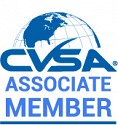What Happens in Canada, Stays in Canada (How Canadians Will be Affected by Enforcement of the New U.S. HOS Rules)
We've had a number of calls asking how the new U.S. HOS rules will affect Canadian drivers, and whether operating under the Canadian rules will conflict with the American's more restrictive regulations.
There has been a Memorandum of Understanding (MOU) in place between the two countries since the HOS regulations began to diverge back in the nineties. It allows driver to follow local regulations while operating in either country without conflicting with rules in the home country.
That said, certain requirements must still be met, and these apply mostly to American drivers who operate under stricter rules than do Canadians.
The most obvious example is Canada's 13-hour driving limit. An American driver may drive 13 hours in Canada, just like we do (provided the company permits it), but he or she must take 10 hours off-duty before re-entering the U.S. and resuming work there. If the driver re-entered the U.S. with 12 hours on the log from a day's driving in Canada, he or she would be in violation of the American 11-hour driving rule.
As for the new U.S. rules, Canadians can still take more than one reset while operating in Canada, but they may not be recognized if at least one reset does not comply with the 1 am to 5 am requirements.
According to Daniel Boyer, president of B.D.R. Safety Consulting Inc. in Regina, Sask, if the reset does not meet the U.S. requirements, the driver would simply be on the "recap" method of calculating available hours.
"Canadian drivers can still use the 36-hour restart while in Canada, however, if they will be going to the U.S. and want that restart to count, they must have the two consecutive period from 1 am to 5 am included in their 36 hours," he says. "If the two periods are not there, the restart does not count in the U.S. and a driver could find himself or herself out of hours. They would then have to do the recap method to figure out how many hours they have left for the U.S. This would also apply to U.S. drivers while in Canada."
As well, the new 30-minute break requirement applies to Canadians entering the U.S. in a particular driving shift. If the point before which the break must be taken (before beginning the 8th hour after coming on duty) arrives while the driver is still in Canada, to stay compliant in the U.S. for the remainder of that driving shift, the driver must take the 30-minute break while in Canada.
It's all about being compliant for the full driving shift at any time while in the U.S.
"Prior to entering the U.S., drivers must be in compliance with the U.S. rules for that day," says Boyer. "They must have a minimum of 10 consecutive hours off duty time prior to the start of their day (except if using the sleeper exemption)and be in compliance with either the 60/7 or 70/8 rules. They also may not have started their shift more than 14 hours previous to crossing the border (U.S. maximum 14 hours vs. Canada 16 hours)."
By now, you're probably wondering how to explain this to a U.S. law enforcement official. The federal motor carrier safety regulations contain a section that speaks to this: interpretation for 49 CFR 395.3.
Look particularly at Questions 4 and 5. They provide direction on how the MOU works and how U.S. law enforcement is supposed to treat the Canadian rules when they come into play with U.S. enforcement.
But don't take our word on this. Talk with your company's safety department and abide by what they tell you. This is just guidance.







